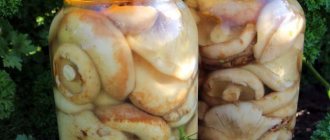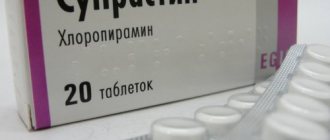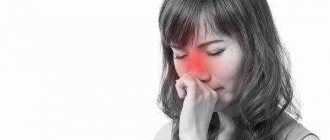Related Posts
- Disinfection of mold and mildew in the house
How to remove mold in tile joints: causes and best ways to combat it
How to treat walls with copper sulfate against mold: preparation of solution and treatment procedure
Mold on walls is often found not only in basements, but also in residential areas. Its appearance not only spoils the surface and appearance, but also causes various diseases. It is dangerous to be in such premises, especially for children. Therefore, you need to know how to remove mold in the basement .
Mold on bread. Reason for appearance
There are several good reasons that literally cause mold to appear on baked goods and some other food products. The first reason is inappropriate sanitary standards in production premises. The second reason is the addition of ingredients and additives to the dough for future bread that are simply not intended for such a purpose. The traditional recipe was created for a reason, but many modern bakeries, aiming to save on production, replace or completely ignore some ingredients important for baking.
The third reason why mold may appear on bread is a faulty oven or a deliberate reduction in the time required for the products to bake well. Damp, underbaked bread becomes moldy much more often than bread that was simply baked incorrectly.
Quite often in production, old loaves ground into crumbs are added to fresh bread dough. They may already be infected with fungus, so freshly baked bread becomes moldy within a day. Even a small amount of mold in such an “additive” is enough to ruin the entire batch.
Special food
In case of toxic poisoning of the body, it is necessary to pay special attention to the diet. Foods such as meat, sausage, fresh bread, raw vegetables and fruits, fried eggs, and so on should be excluded from the diet. Products are prohibited according to two criteria: they should not overload the digestive system, which is currently removing mycotoxins, and be a favorable breeding ground for the development of fungus.
General dietary recommendations for mold poisoning include the following:
- the basis of the diet should be porridge with water and pureed vegetable soups;
- Cottage cheese baked in the oven can be used as a protein food;
- bread products are consumed only in dried form (crackers, dry cookies);
- vegetables and fruits are consumed boiled or baked;
- As a drink, it is better to take green tea, herbal decoctions, to which honey can be added for taste.
For mild mold food poisoning, it is advisable to maintain such a diet for about a week. If the problem is chronic, the diet is developed by a nutritionist on a long-term basis.
Black mold
This is perhaps the scariest type of mold for many people and the most common. Most often, this type of mold can be seen on the walls of rooms, in damp bathrooms and toilets. But it also appears on food products, including bakery products. Black mold on bread is quite dangerous. Despite the fact that antibiotics were first obtained from black mold, if it enters the digestive system it can cause serious poisoning and allergic reactions.
There are quite a few strains of this type of mold. Some are even used in making cheese. But experts and doctors advise not to figure out which strain is dangerous or beneficial. If black mold appears on bread, it is better not to cut off a piece, but to immediately throw away the entire loaf.
Harm and benefit
Bread mold cannot be beneficial. Spoiled baked goods often develop a black or greenish coating. It can be seen most often on the crust of the product. However, mold is not localized in one place; it evenly affects all layers of bread.
We recommend reading: Perforated (perforated) stomach ulcer: symptoms and treatment
It should also be taken into account that you can inhale mold. Fungal spores, once in the lungs, do not lead to intoxication, but provoke the development of a fungal disease of the respiratory system. If a person has inhaled a lot of mold, then he should definitely consult a doctor on this issue and undergo a thorough examination.
Pink mold is a sign of potato disease. This disease develops due to the use of contaminated wheat in the production of flour.
Food poisoning can easily occur in a person who has eaten moldy bread. What to do in this case should be determined by the doctor. And if you regularly consume foods with mold, the risk of developing cancer pathologies increases significantly.
Green mold
Another common type of mold is green fungus. It is very common on fruits, vegetables and sometimes baked goods. But green mold especially loves dairy products. If you see such mold on a loaf of bread or in a glass of sour cream, then there is no need to get rid of the top layer; we throw the product away immediately.
It has been proven that the visible part of the mold layer is only, as they say, half of the iceberg. The spores are invisible, but they penetrate deep very quickly. Therefore, if you do not see mold below the cut, this does not mean that it is not there. Is it possible to eat moldy bread even if the affected part is cut off? Definitely not!
Treatment
In case of a single mold poisoning, it is sufficient to carry out first aid measures designed to remove toxic substances from the human body, but chronic infection requires complex drug treatment. If the tests accurately diagnose this disease, the attending physician prescribes:
- antifungal drugs selected based on tests;
- medications that provide therapeutic support for the functioning of the kidneys and liver (these organs are especially vulnerable during the process of intensive elimination of toxins);
- probiotics necessary to restore and maintain beneficial microflora in the intestines.
Treatment of people who are infected with mold through the respiratory system is complicated by the fact that it causes secondary diseases (tracheitis, asthma, bronchitis, pneumonia, sinusitis, and so on). Here you need to undergo long-term therapy, following the instructions of a specialist.
Why is mold dangerous?
Of course, we very often see mold on baked goods. Many, seeing plaque on a loaf, ask a fair question: “What happens if you eat bread with mold?” There are several options.
Scientists call molds allergens. Of course, in small quantities they are not so dangerous, but they can easily cause a severe attack of an allergic reaction in a person prone to allergies. Significant doses of mold, once in the body, will cause suffocation and even painful shock.
Mold is known to spread very quickly. Some human organs are simply created for this, for example, the lungs. Here there are quite comfortable conditions for mold to reproduce: high humidity and plenty of oxygen. Therefore, answering the question of what will happen if you eat bread with mold, we can confidently say - acute respiratory diseases. And this is not only a mild cough, but also acute bronchitis, pneumonia and even asthma. Moreover, the danger also lies in the fact that mold can infect not just a single area, but also completely entangle the entire lungs.
It is impossible to say unequivocally that mold is dangerous for everyone. Some human bodies will not react in any way to small amounts of fungus ingested in food. The bodies of other people, weakened or with chronic diseases of the gastrointestinal tract, will not say “thank you”. Even a small piece of moldy bread can cause severe poisoning, including vomiting, nausea or diarrhea. Mold on bread and other food products is especially dangerous for a weak, just developing child’s body.
How to understand that you have been poisoned?
You can recognize poisoning by the symptoms characteristic of poisoning by mold spores. The spores pose the greatest health risk, especially if they are inhaled over a long period of time or enter the bloodstream. When intoxicated, a person:
- Feels weak, nauseous.
- Gets tired quickly.
- Suffering from headaches.
A rash and runny nose appears on the skin, as if from an allergy.
Mold syndromes are similar to allergy syndromes
At risk are children and older people whose immunity has not yet been formed or is already weakened. Strong immunity is not a panacea, since when a large number of fungi enter, they quickly multiply and cause mycosis.
What should I do?
If you eat moldy bread and feel unwell, you need to remove toxins from your body. Drink plenty of fluids to flush out toxic substances from your kidneys, force vomiting, or take activated charcoal . Be sure to get examined at the clinic - only in laboratory conditions can diagnosticians confirm the presence of fungus in your body, identify it and prescribe qualified treatment.
Throw away or “reanimate”?
What foods can be eaten after cutting off or removing mold in another way, and which are recommended to be disposed of immediately?
Some types of cheeses, hard smoked or dry-cured sausages can be “resuscitated” (the mold can simply be washed off the surface), hard fruits and vegetables (the affected piece is cut off).
But products such as sausages, bacon or boiled sausage, baked goods and dairy products, as well as canned food, pasta, legumes, cereals and soft types of fruits and vegetables must be mercilessly thrown into the trash. Mold roots (substrate mycelium) penetrate very quickly and deeply into the bread, therefore, even after cutting off a spoiled piece, you will continue to eat a loaf poisoned by spores.
Proper disposal of food spoiled by mold is also very important. It is recommended to wrap spoiled bread in a plastic bag and only then throw it in the trash. Also, try to hide the spoiled loaf in a bucket so that neither pets nor small children have access to it.
Tips for proper food storage
The more often you inspect your refrigerator, the less spoiled food there will be. Try to check the contents of your refrigerator at least once a week. If, for example, you notice a couple of moldy berries in a container with strawberries, then do not rush to get rid of the sweet delicacy completely; remove only the spoiled berries; simply rinse the rest under running water.
Food will be fresher in a refrigerator that is regularly maintained. Even one wash a month will be enough to avoid the spread and even the appearance of mold.
Of course, an important factor is the correct choice of products and careful reading of the expiration date line. The fresher the product you buy, the better and longer it will be stored.
Be extremely careful when purchasing products! Be as careful as possible when choosing a manufacturer you can trust! Take care of your health!
Possible consequences
Long-term consumption of foods colonized by mold fungi leads to changes in the blood formula (the number of red and white blood cells decreases), the appearance of signs of damage to the central nervous system (insomnia or drowsiness, confusion, delirium, hallucinations), and in severe cases, death is possible.
When living in rooms affected by mold, mycotoxin can cause allergic diseases, immunodeficiency conditions, aggravate the course of various acute and chronic pathologies, and with prolonged exposure, accumulating in the tissues of internal organs, stimulates the development of malignant neoplasms.











